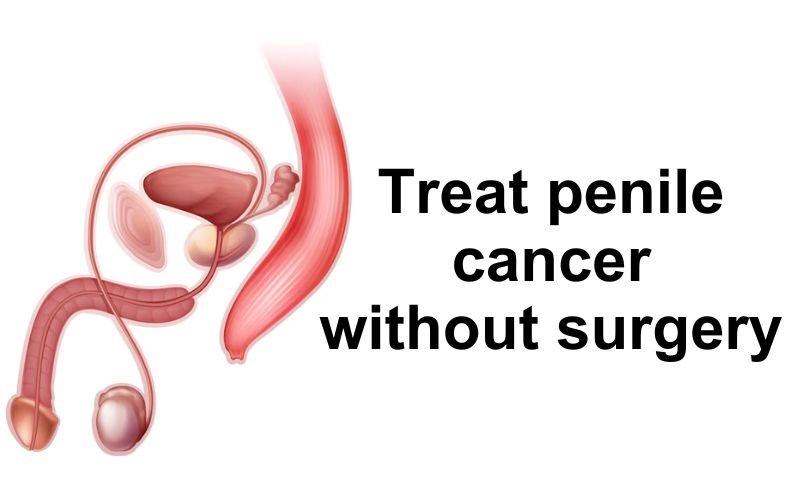Penile cancer, though relatively rare, is a serious condition that affects the male genital organ. When early signs of penile cancer is highly treatable, and while surgery is often the standard approach, some patients may opt for or require alternative treatments due to various factors, including their overall health, tumor size and location, or personal preference. Treatment without surgery can involve a combination of nonsurgical modalities, such as chemotherapy, radiation therapy, topical treatments, and immunotherapy. Each of these approaches can be used alone or in conjunction with other treatments to effectively manage and sometimes cure penile cancer.
1. Chemotherapy
Chemotherapy involves the use of drugs to kill or slow the growth of cancer cells. In penile cancer, chemotherapy is typically administered when the cancer has spread beyond the local area (metastasis), or when surgery is not an option due to the location or size of the tumor.
Systemic Chemotherapy
Systemic chemotherapy refers to the administration of drugs that circulate throughout the body, usually intravenously (IV) or orally, to target and kill cancer cells. It is often used in advanced cases of penile cancer, where the cancer has spread to lymph nodes or distant organs. Common chemotherapy drugs used for penile cancer include cisplatin, 5-fluorouracil (5-FU), and methotrexate.
While chemotherapy can be highly effective in treating metastatic penile cancer, it comes with a range of side effects, including nausea, fatigue, hair loss, and a weakened immune system, among others. However, these side effects are often temporary and can be managed with supportive care.
Topical Chemotherapy
Topical chemotherapy can also be used for early-stage penile cancer that is confined to the skin. Drugs like 5-fluorouracil (5-FU) or imiquimod are applied directly to the affected area. These drugs work by targeting and destroying cancerous cells while minimizing damage to surrounding healthy tissue.
Topical chemotherapy is less invasive than systemic chemotherapy and generally has fewer side effects. It is typically used for smaller, superficial tumors that have not invaded deeper tissues. However, it may take several weeks or months of treatment for the drugs to have a noticeable effect, and the patient may need to follow up regularly for monitoring.
2. Radiation Therapy
Radiation therapy uses high-energy rays to target and kill cancer cells. It can be used as a primary treatment, especially for early-stage penile cancer, or as a supplementary treatment following surgery to kill any remaining cancer cells. Radiation therapy can be delivered externally (external beam radiation) or internally (brachytherapy).
External Beam Radiation
External beam radiation involves directing focused beams of radiation at the tumor from outside the body. This type of radiation therapy is often used when the tumor is located on the shaft of the penis or the base of the penis. Treatment is typically delivered over a course of several sessions, often lasting several weeks. Each session is relatively short but must be performed with precision to minimize damage to healthy tissues.
This type of therapy can be effective in shrinking tumors and preventing the spread of cancer, but it can have side effects, such as skin irritation, fatigue, and potential damage to surrounding tissues, such as the urethra or bladder.
Brachytherapy
Brachytherapy involves placing a radioactive source directly inside or very close to the tumor. For penile cancer, this might mean placing radioactive seeds or implants into the affected tissue. This form of radiation therapy is particularly useful when dealing with smaller tumors that are located close to the surface of the penis. Since the radiation is localized, the risk of damaging surrounding healthy tissues is minimized.
The major downside to brachytherapy is the potential for pain and swelling during and after the procedure. There may also be a slight risk of complications, such as infections or difficulty with urination.
3. Immunotherapy
Immunotherapy aims to enhance the body’s immune system to fight cancer more effectively. It is a relatively new treatment option for many cancers, including penile cancer, and involves the use of substances to stimulate the immune system or directly target cancer cells.
Checkpoint Inhibitors
In recent years, checkpoint inhibitors have emerged as a promising treatment for various cancers, including penile cancer. Checkpoint inhibitors, such as pembrolizumab (Keytruda) and nivolumab (Opdivo), work by blocking certain proteins that prevent immune cells from attacking cancer cells. In patients with advanced penile cancer, these drugs can be particularly effective by reactivating the body’s immune system to target and destroy cancer cells.
While checkpoint inhibitors have shown promising results, they are not without risks. They can cause side effects like skin rashes, fatigue, and inflammation in organs such as the lungs, liver, or intestines. However, for patients with advanced cancer or those who cannot undergo surgery, checkpoint inhibitors may provide a vital option for control or remission.
Cytokine Therapy
Cytokine therapy, which includes interleukin-2 (IL-2) and interferon, can help stimulate the immune system to better target cancer cells. This treatment may be used in combination with other therapies for more advanced cases. Although cytokine therapy is not as commonly used as other forms of treatment, it may offer some benefit for specific patient populations.
4. Laser Therapy (Photodynamic Therapy)
Laser therapy, also known as photodynamic therapy (PDT), is a treatment that uses laser light combined with a photosensitizing agent to destroy cancer cells. The photosensitizing agent is applied to the tumor site, and a laser is then used to activate the agent. This results in the production of a form of oxygen that kills cancer cells.
PDT is particularly useful for small, localized tumors or precancerous lesions on the penis. This treatment can be a less invasive alternative to surgery and is often used for superficial forms of penile cancer, such as carcinoma in situ (CIS). One of the advantages of laser therapy is its ability to preserve healthy tissue while still effectively treating the cancer.
However, PDT may not be as effective for more invasive forms of penile cancer, and patients may experience side effects such as swelling, pain, or discoloration of the skin. This therapy also requires careful monitoring, as it may need to be repeated for full effect.
5. Cryotherapy (Cryosurgery)
Cryotherapy, or cryosurgery, involves freezing cancerous tissue to destroy it. It is often used for small, localized tumors or precancerous lesions, similar to laser therapy. Liquid nitrogen is typically applied directly to the tumor, freezing the cancer cells and causing them to die.
Cryotherapy is less invasive than traditional surgery and can be an option for patients who are not candidates for surgery or who prefer to avoid it. It can be effective for early-stage penile cancer, especially when tumors are located on the surface of the skin. However, it may not be as effective for larger or deeper tumors, and there is a risk of the cancer recurring if not thoroughly treated.
6. Topical Treatments for Precancerous Lesions
For patients with precancerous conditions, such as penile intraepithelial neoplasia (PIN) or carcinoma in situ (CIS), topical treatments can be an effective option. These conditions are often considered early stages of penile cancer and may not require surgery if treated promptly.
The most commonly used topical treatments are:
- 5-Fluorouracil (5-FU): This chemotherapy agent can be applied to the affected area to help eliminate abnormal cells. It is particularly effective in treating PIN and CIS.
- Imiquimod: A topical immune response modifier that works by stimulating the body’s immune system to fight cancerous cells.
Both of these treatments are applied directly to the affected area and typically require multiple sessions over several weeks or months. The side effects are generally mild and include skin irritation, redness, and swelling at the application site.
Conclusion
While surgery is the primary treatment for penile cancer, there are several nonsurgical options available, depending on the stage, location, and type of the cancer. Chemotherapy, radiation therapy, immunotherapy, laser therapy, cryotherapy, and topical treatments offer alternative treatments for patients who are not candidates for surgery or who prefer less invasive options. These treatments can be effective in managing and, in some cases, curing penile cancer, but they come with their own set of risks and side effects. A multidisciplinary approach, involving oncologists, urologists, and other specialists, is essential in developing a personalized treatment plan for each patient to ensure the best outcomes. Regular follow-up care is crucial to monitor the effectiveness of treatment and detect any recurrence of the cancer.
Read more – (Click here)



